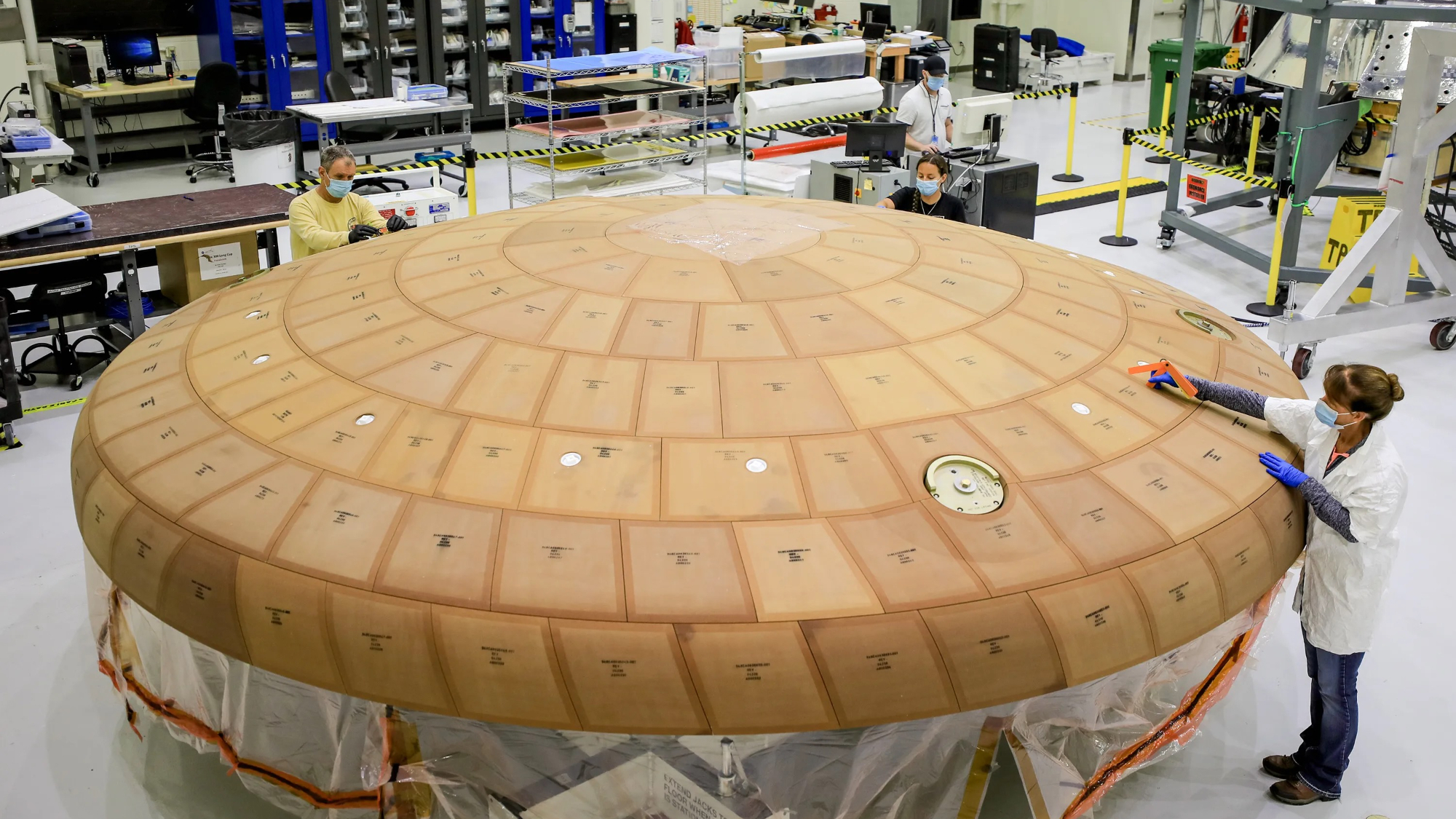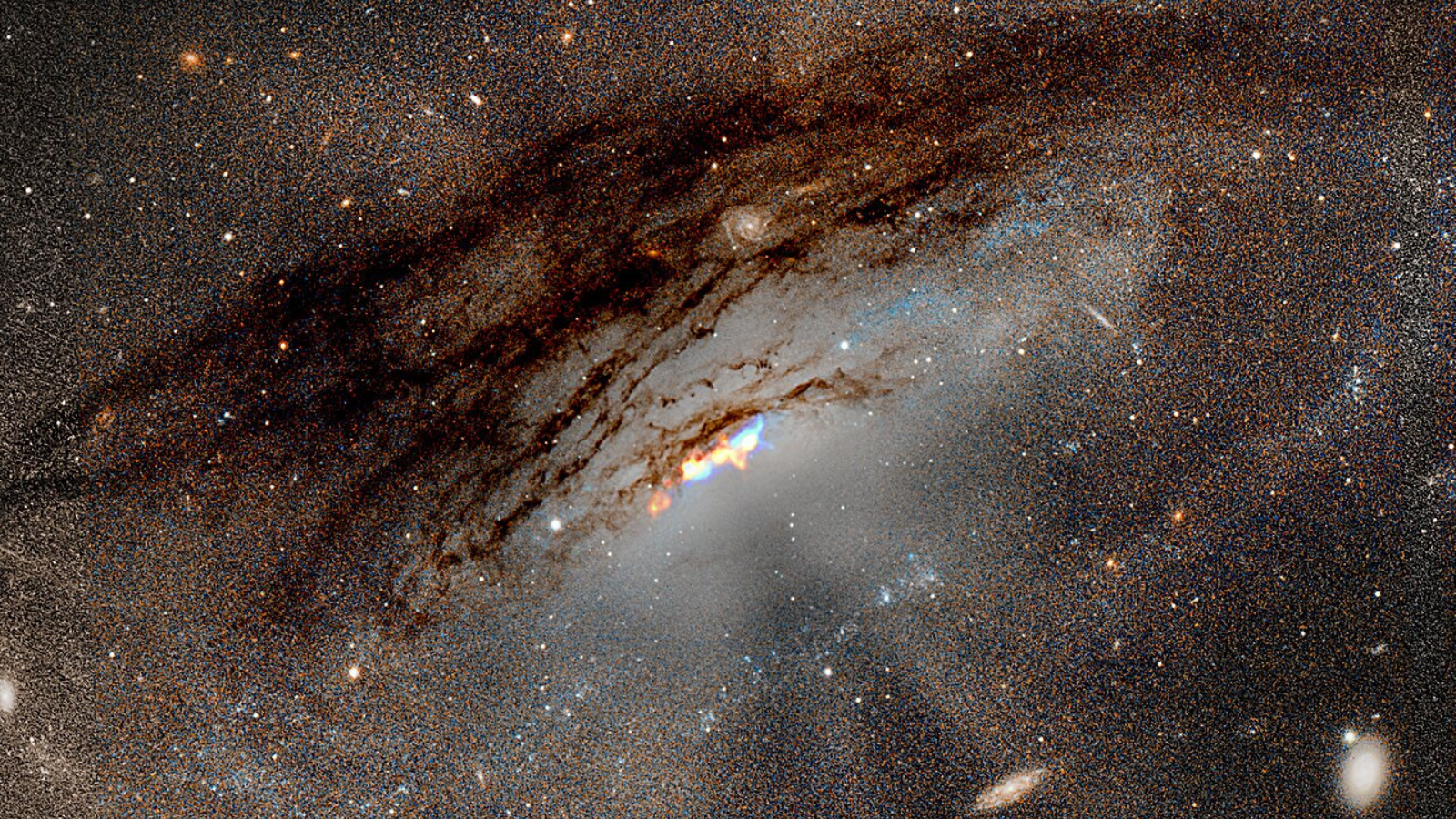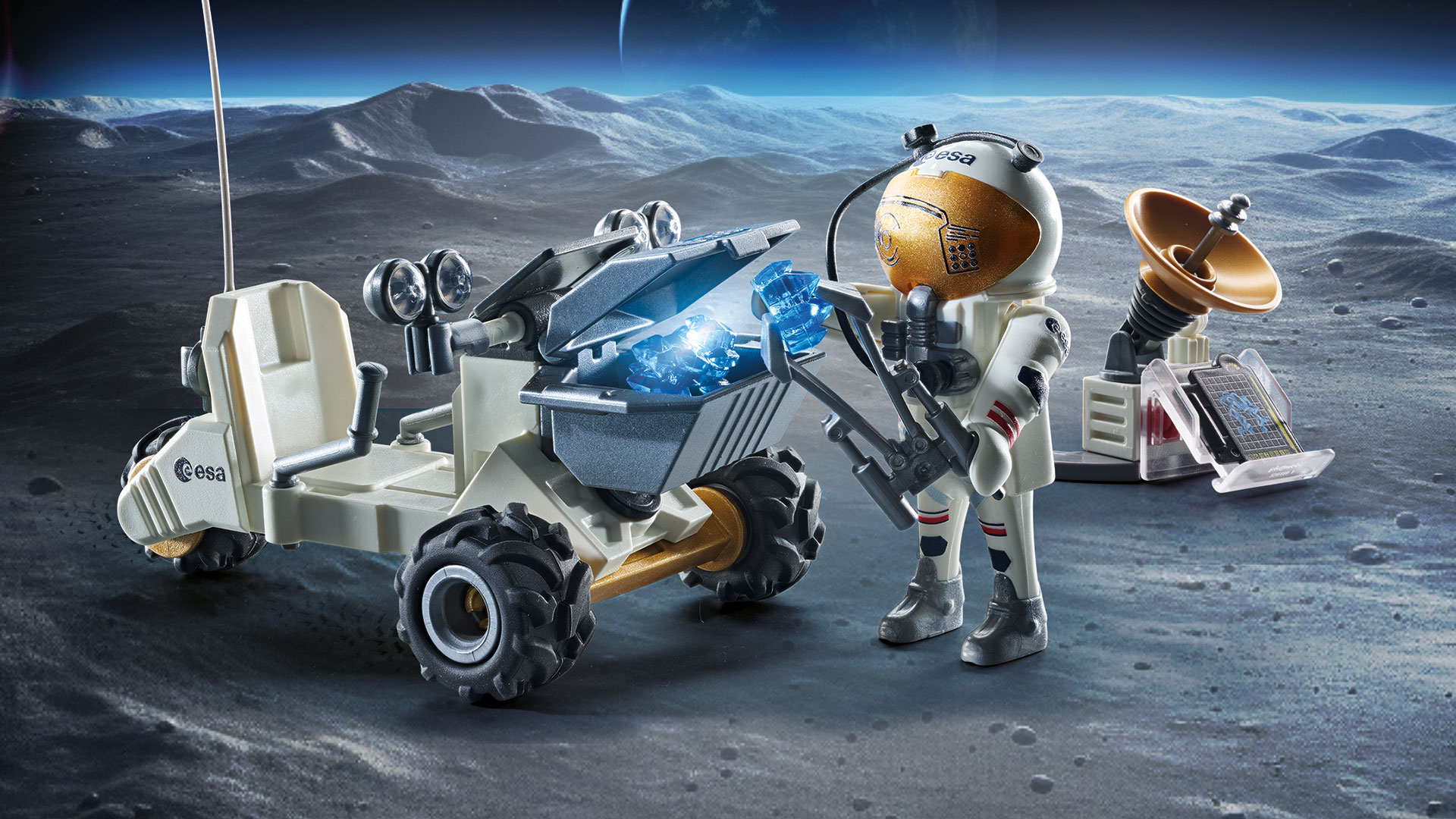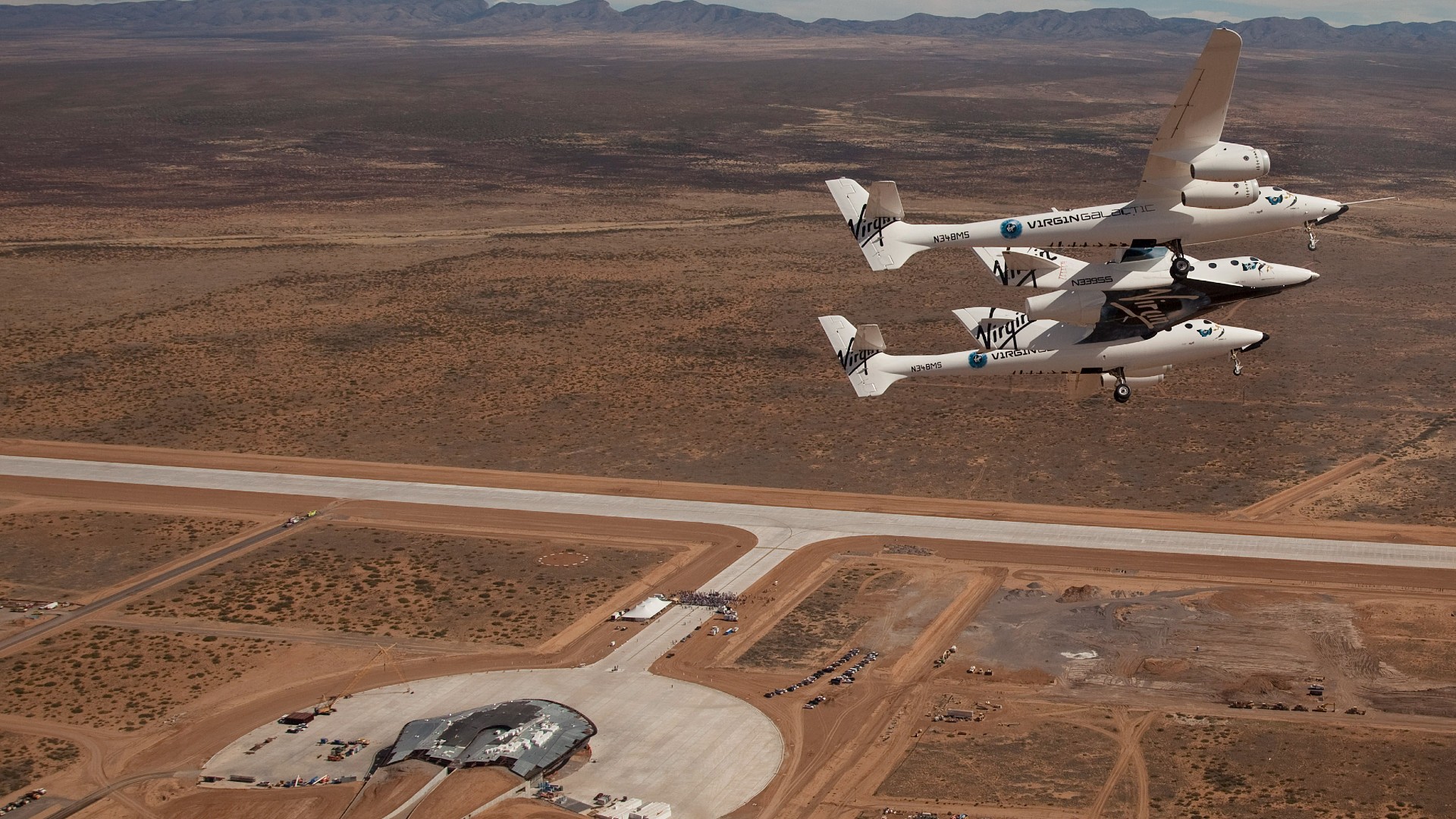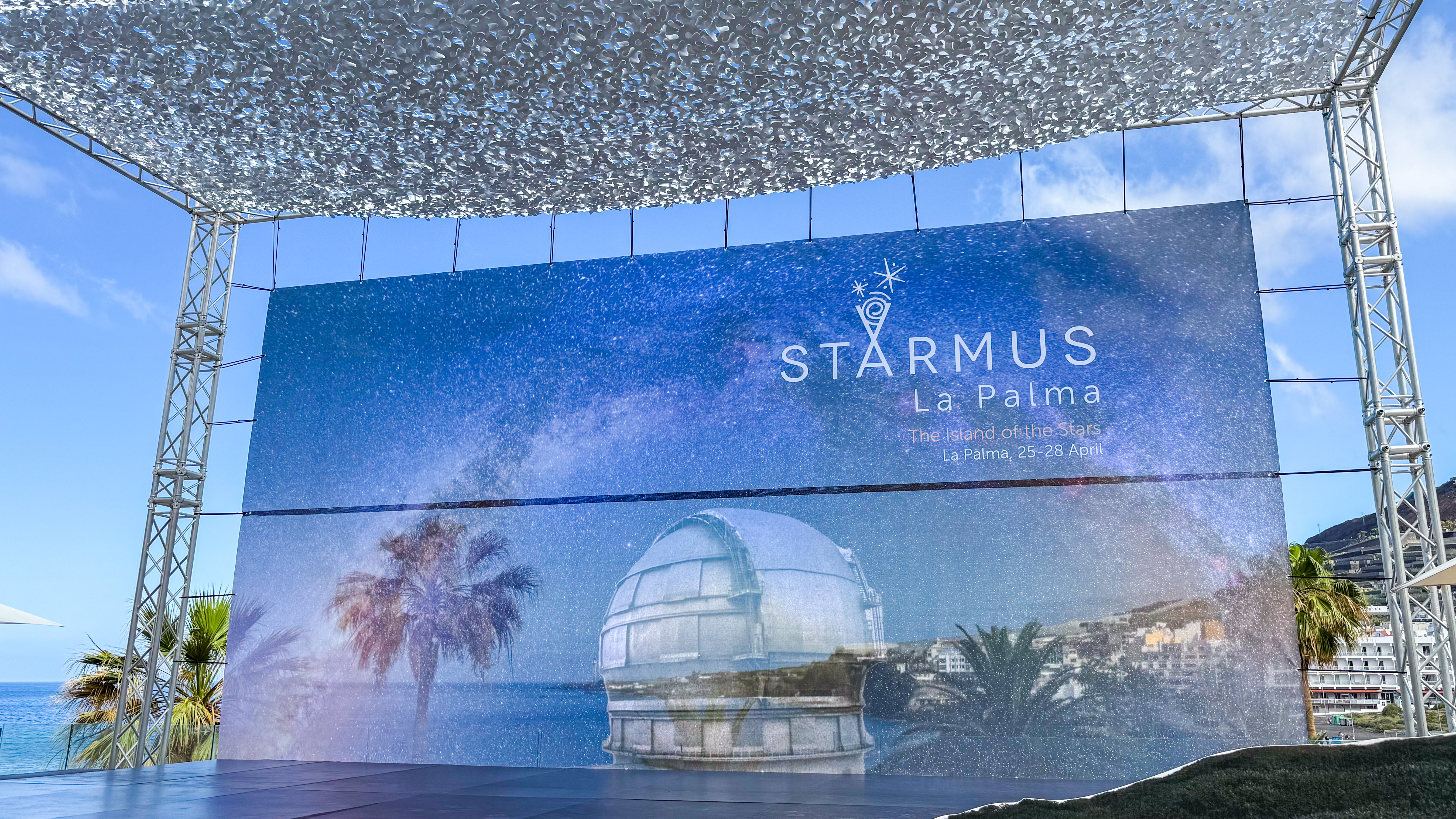Saturn Moon Tethys Shines Above Rings in Gorgeous Photo
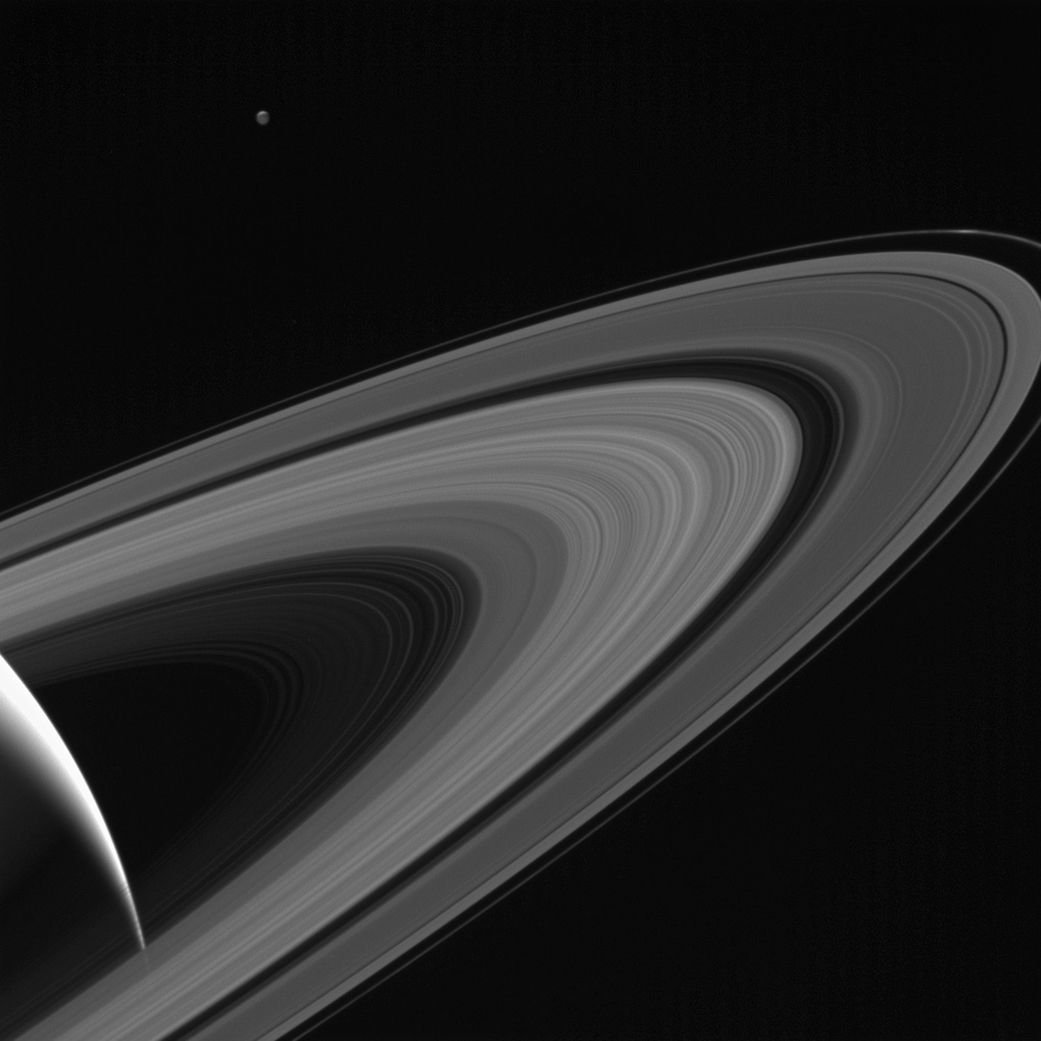
Saturn's icy moon Tethys hovers above the planet's iconic rings in a breathtaking photo by NASA's Cassini spacecraft.
Though NASA released the image Monday (Aug. 21), Cassini actually captured it on May 13, 2017. At the time, the probe was about 750,000 miles (1.2 million kilometers) from Saturn and 930,000 miles (1.5 million km) from Tethys, agency officials said.
The night side of Tethys is lit up by "Saturnshine" — sunlight reflected off its parent planet — in the image. But this Saturnshine isn't quite as powerful as the photo makes it seem.
"Tethys was brightened by a factor of two in this image to increase its visibility," NASA officials wrote in an image description. "A sliver of the moon's sunlit northern hemisphere is seen at top. A bright wedge of Saturn's sunlit side is seen at lower left."
At 660 miles (1,062 km) across, Tethys is the fifth-largest moon of Saturn. (The only bigger ones are Titan, Rhea, Iapetus and Dione.) Tethys has some pretty dramatic features that aren't visible in this photo — a deep canyon that snakes across three-fourths of its surface, for example, and a crater called Odysseus that's 250 miles (400 km) wide.
Cassini has been capturing stunning images like this one since arriving in orbit around Saturn in July 2004. But the probe's work is nearly done: Cassini is in the "Grand Finale" phase of its mission, which will culminate with an intentional death dive into Saturn's thick atmosphere on Sept. 15.
This maneuver is designed to ensure that Cassini doesn't contaminate Titan or fellow Saturn satellite Enceladus with microbes from Earth. (Astrobiologists think Titan and Enceladus may be capable of supporting life.)
Get the Space.com Newsletter
Breaking space news, the latest updates on rocket launches, skywatching events and more!
The $3.2 billion Cassini-Huygens mission is a collaboration involving NASA, the European Space Agency and the Italian Space Agency. Huygens was a piggyback lander that traveled with the Cassini mothership and touched down on Titan in January 2005.
Follow Mike Wall on Twitter @michaeldwall and Google+. Follow us @Spacedotcom, Facebook or Google+. Originally published on Space.com.
Join our Space Forums to keep talking space on the latest missions, night sky and more! And if you have a news tip, correction or comment, let us know at: community@space.com.

Michael Wall is a Senior Space Writer with Space.com and joined the team in 2010. He primarily covers exoplanets, spaceflight and military space, but has been known to dabble in the space art beat. His book about the search for alien life, "Out There," was published on Nov. 13, 2018. Before becoming a science writer, Michael worked as a herpetologist and wildlife biologist. He has a Ph.D. in evolutionary biology from the University of Sydney, Australia, a bachelor's degree from the University of Arizona, and a graduate certificate in science writing from the University of California, Santa Cruz. To find out what his latest project is, you can follow Michael on Twitter.
